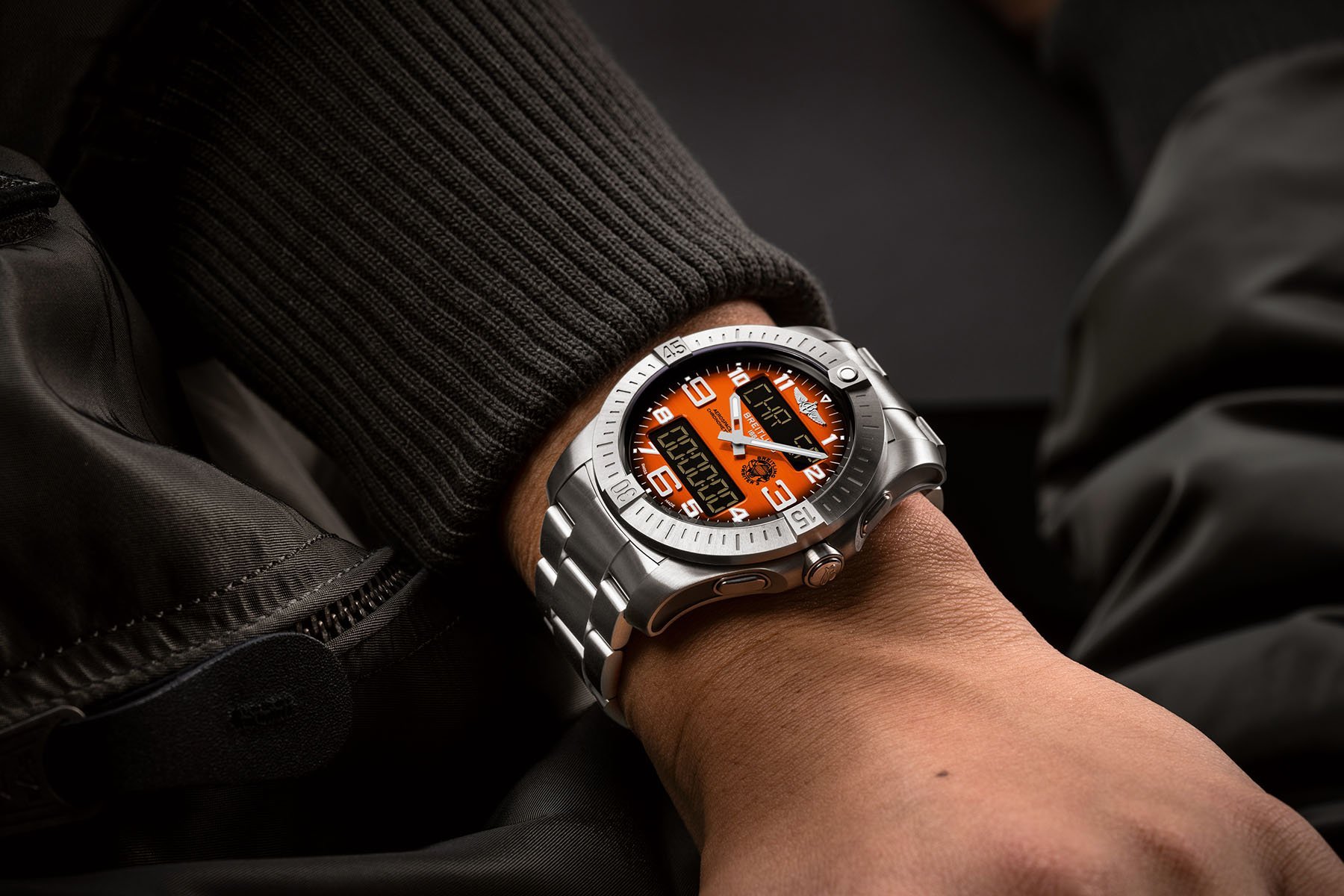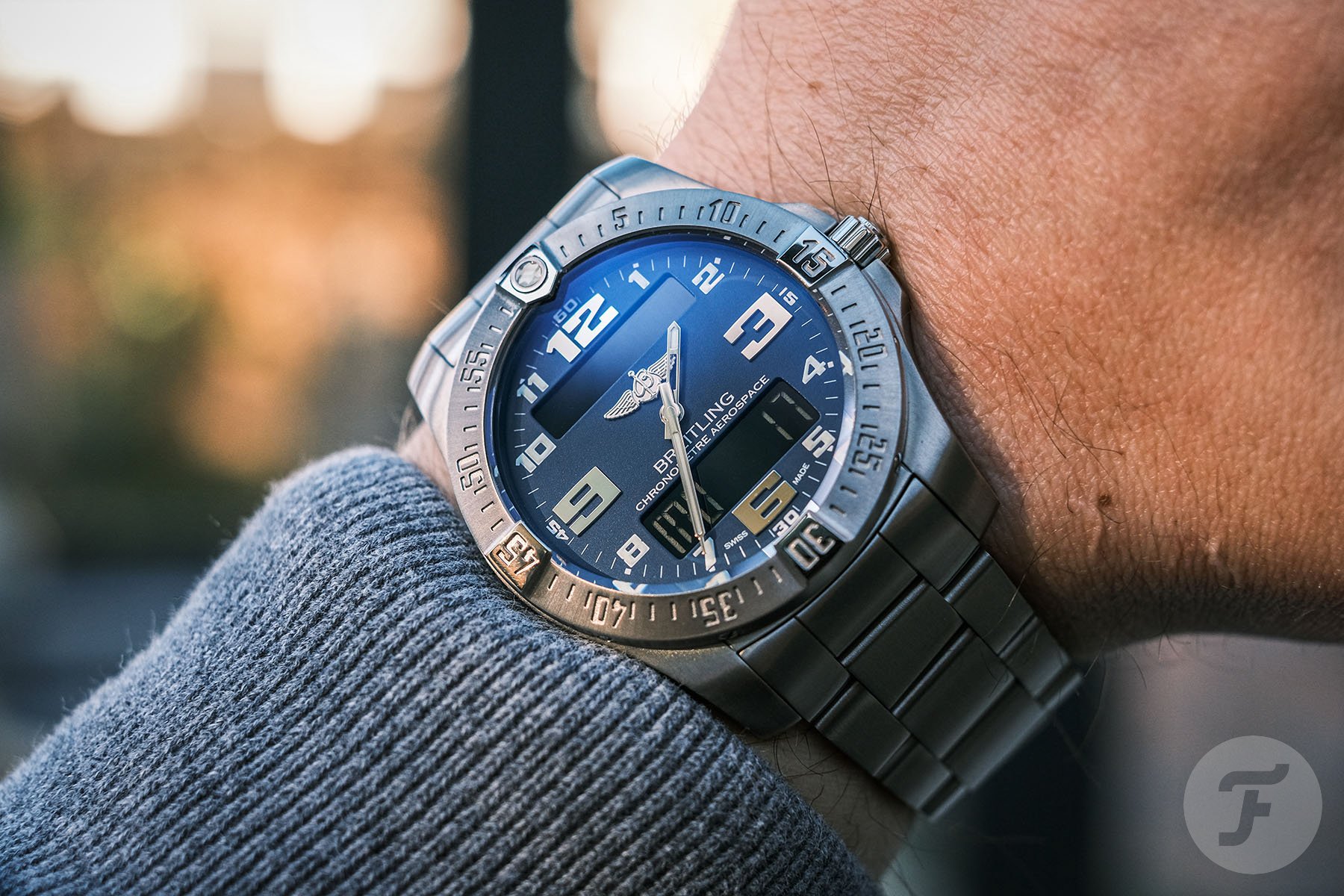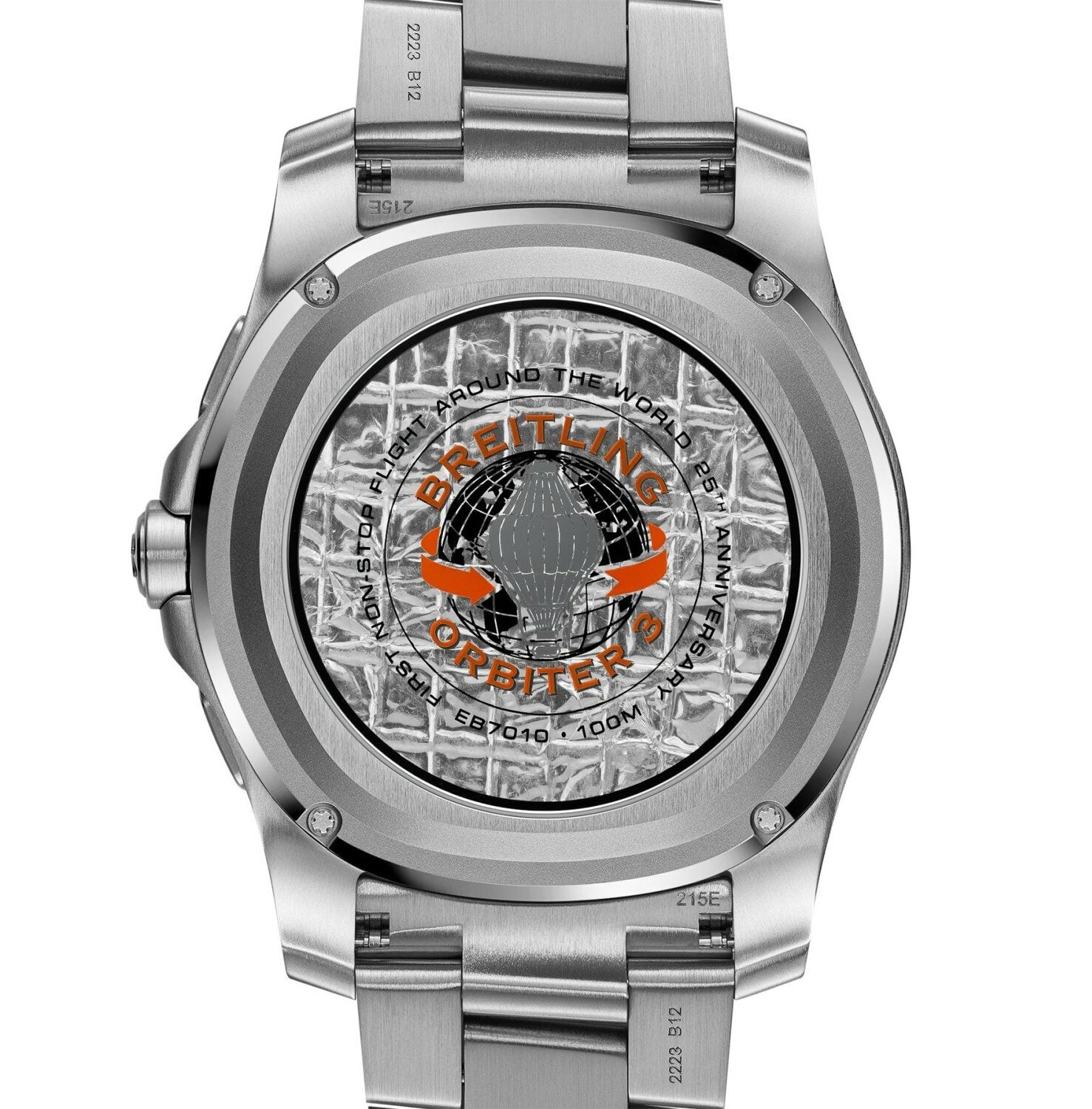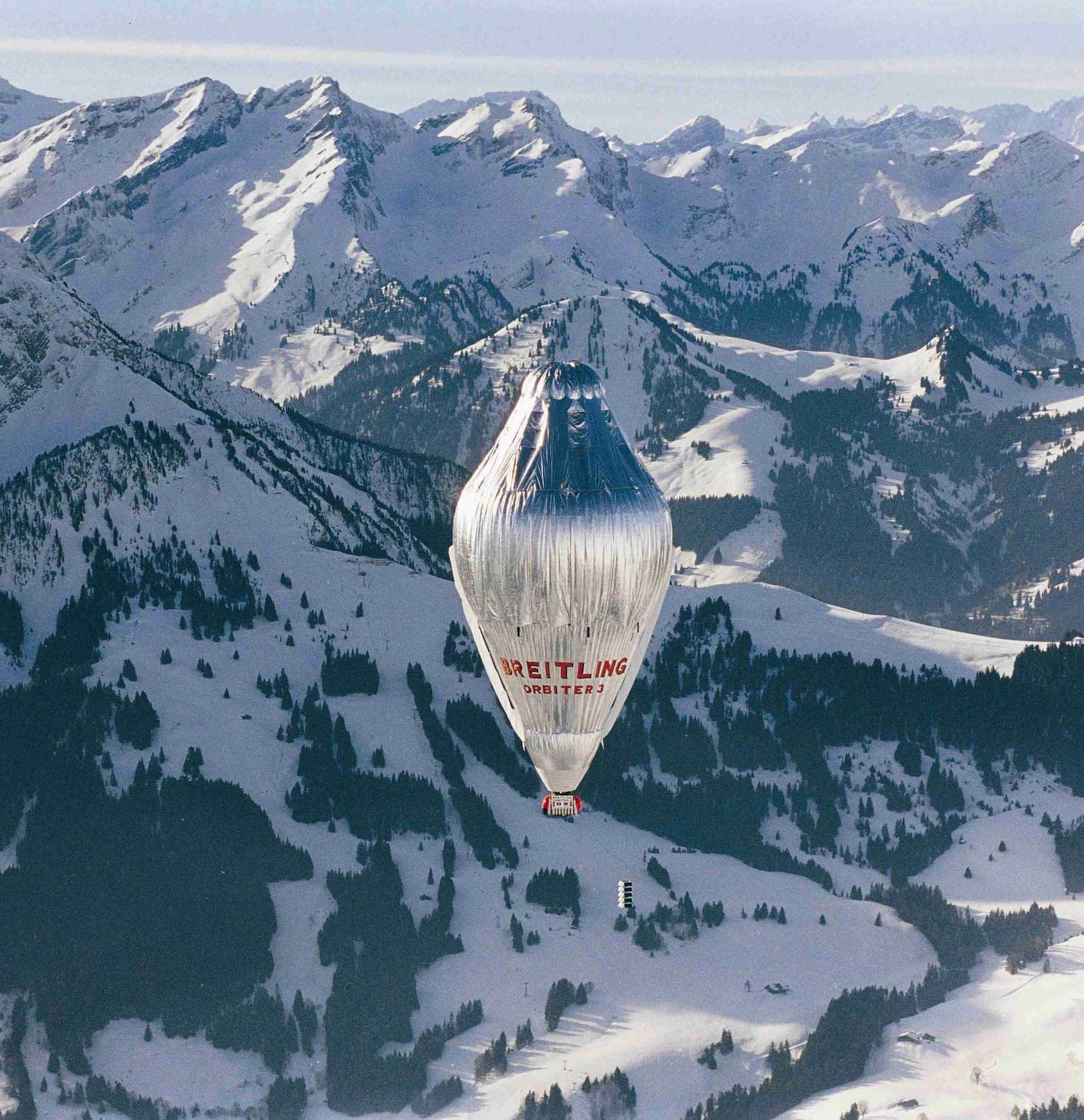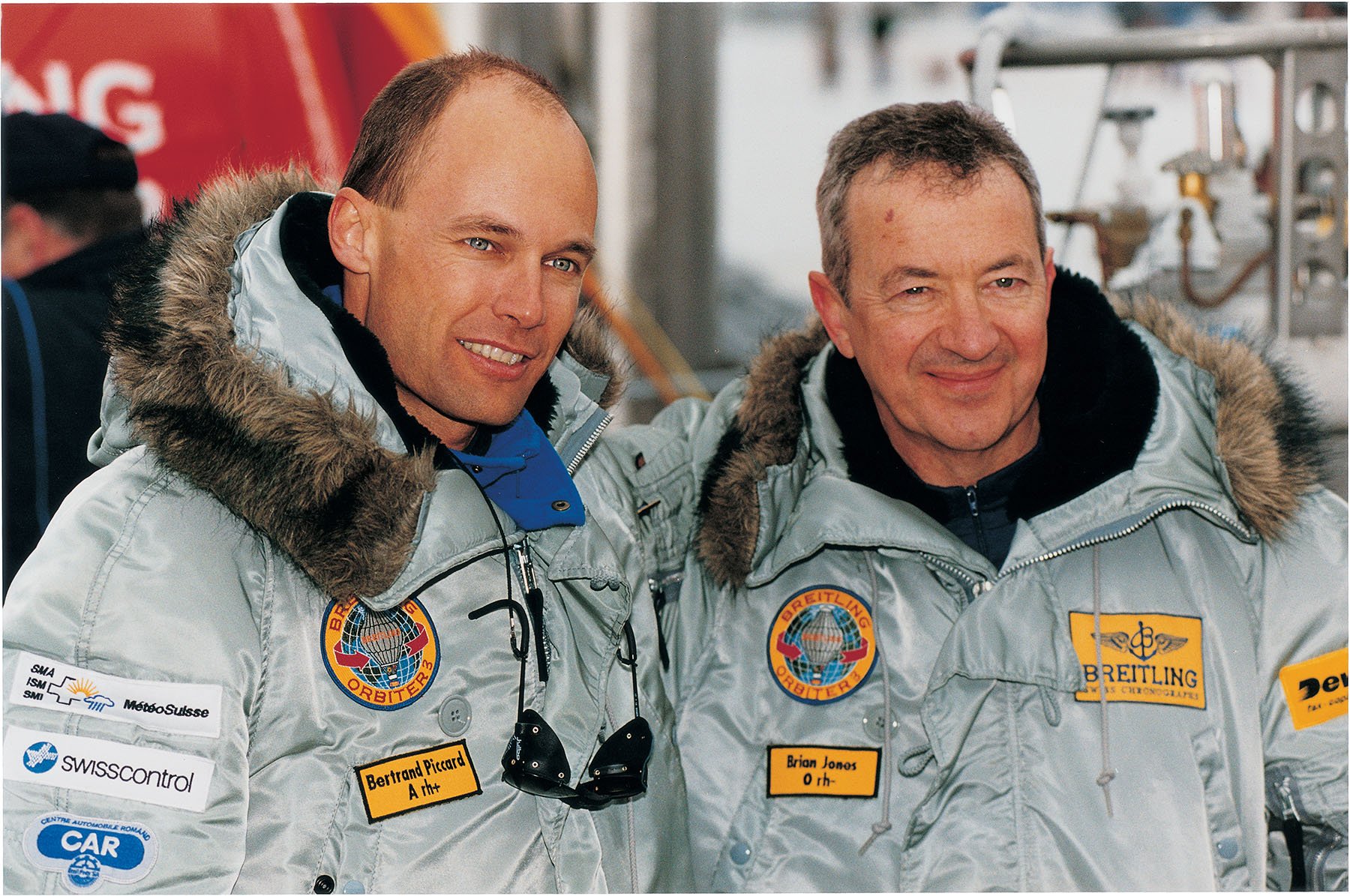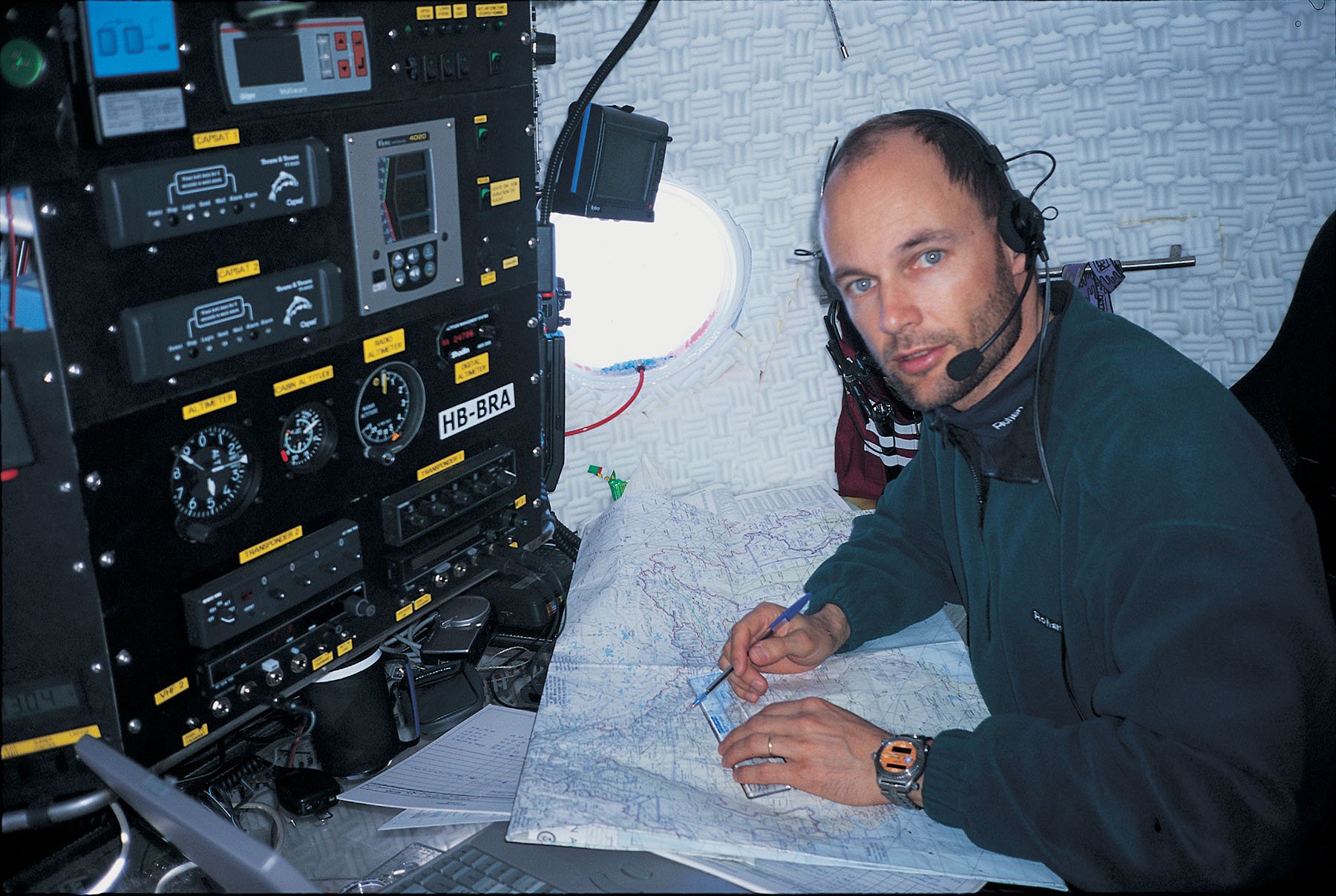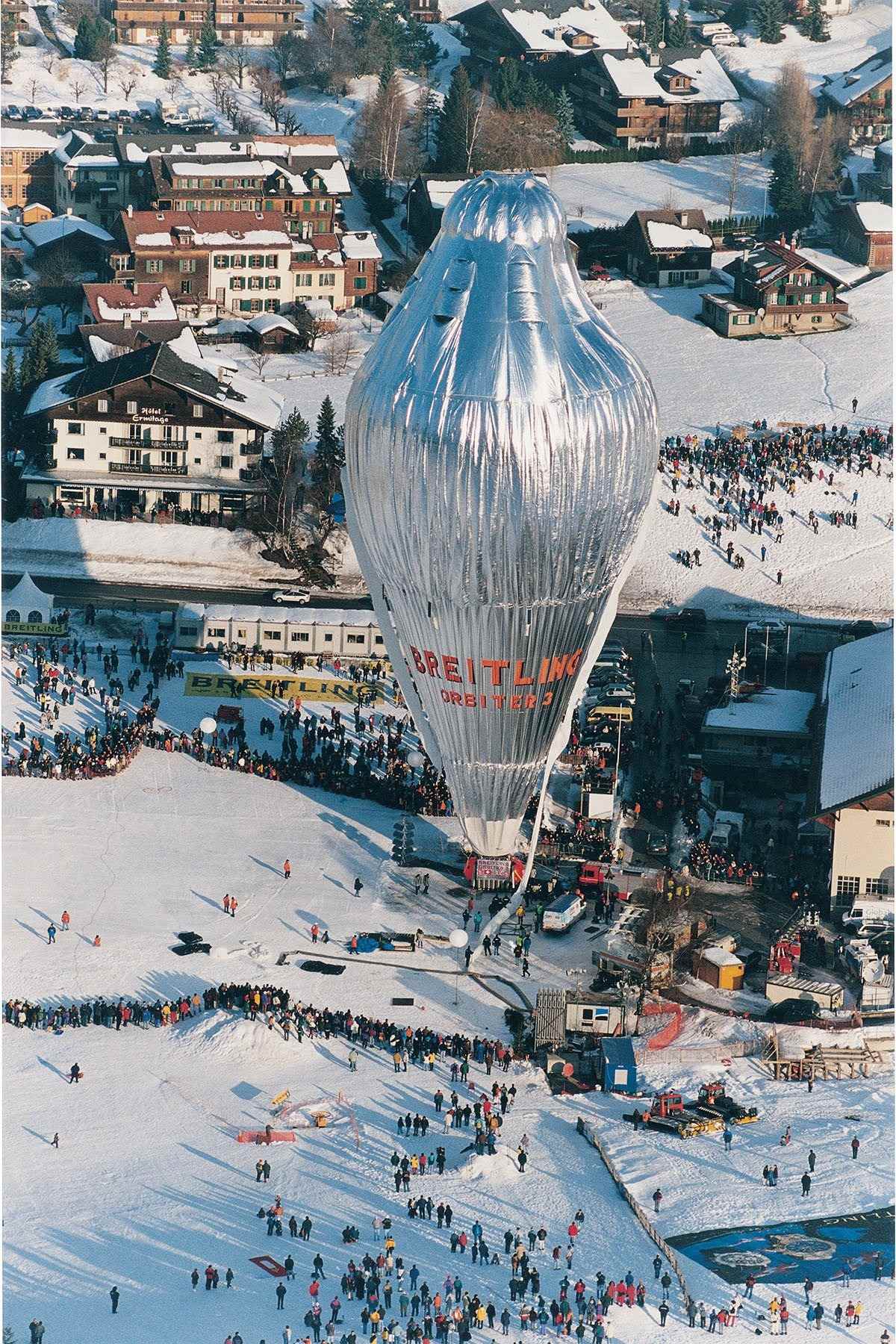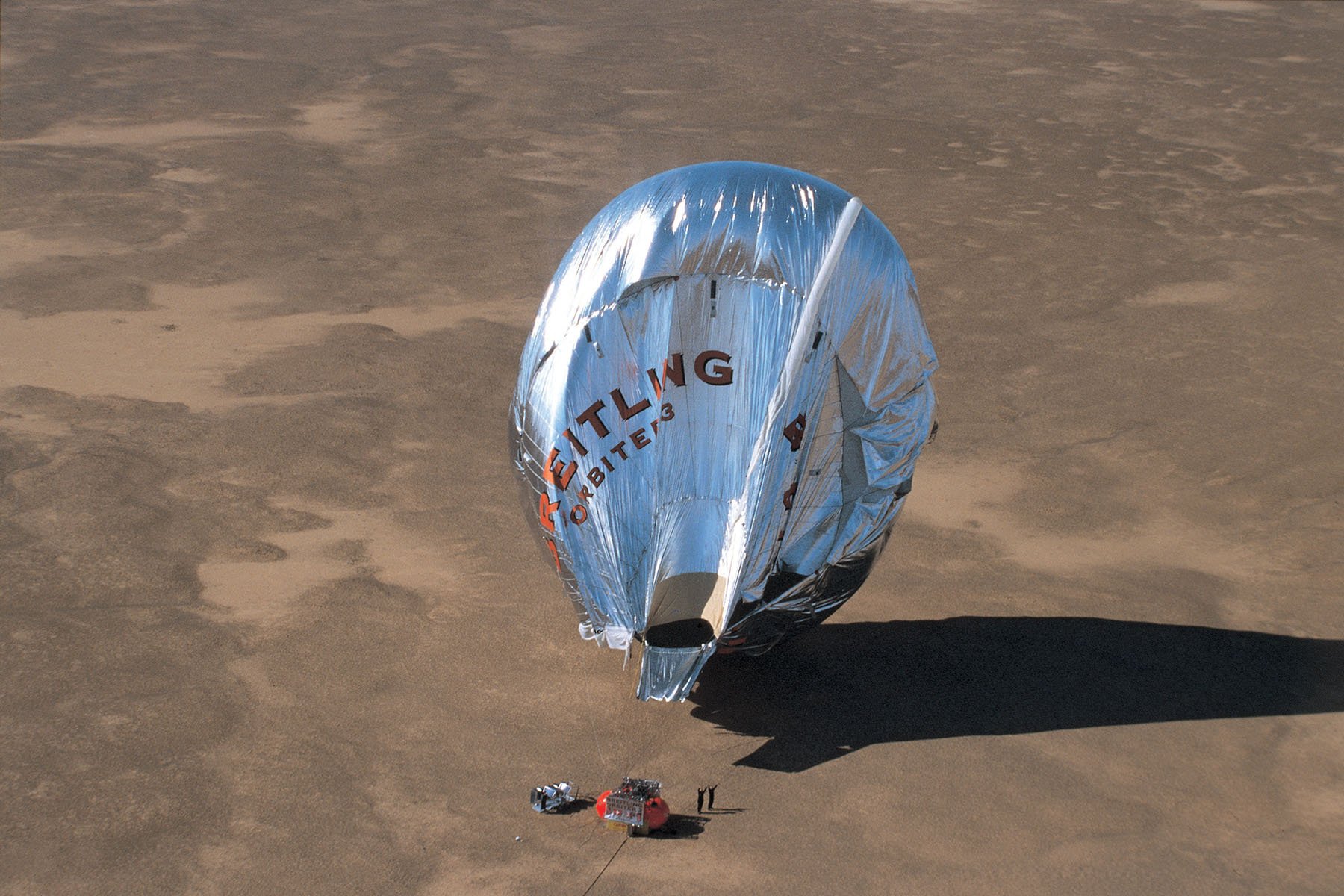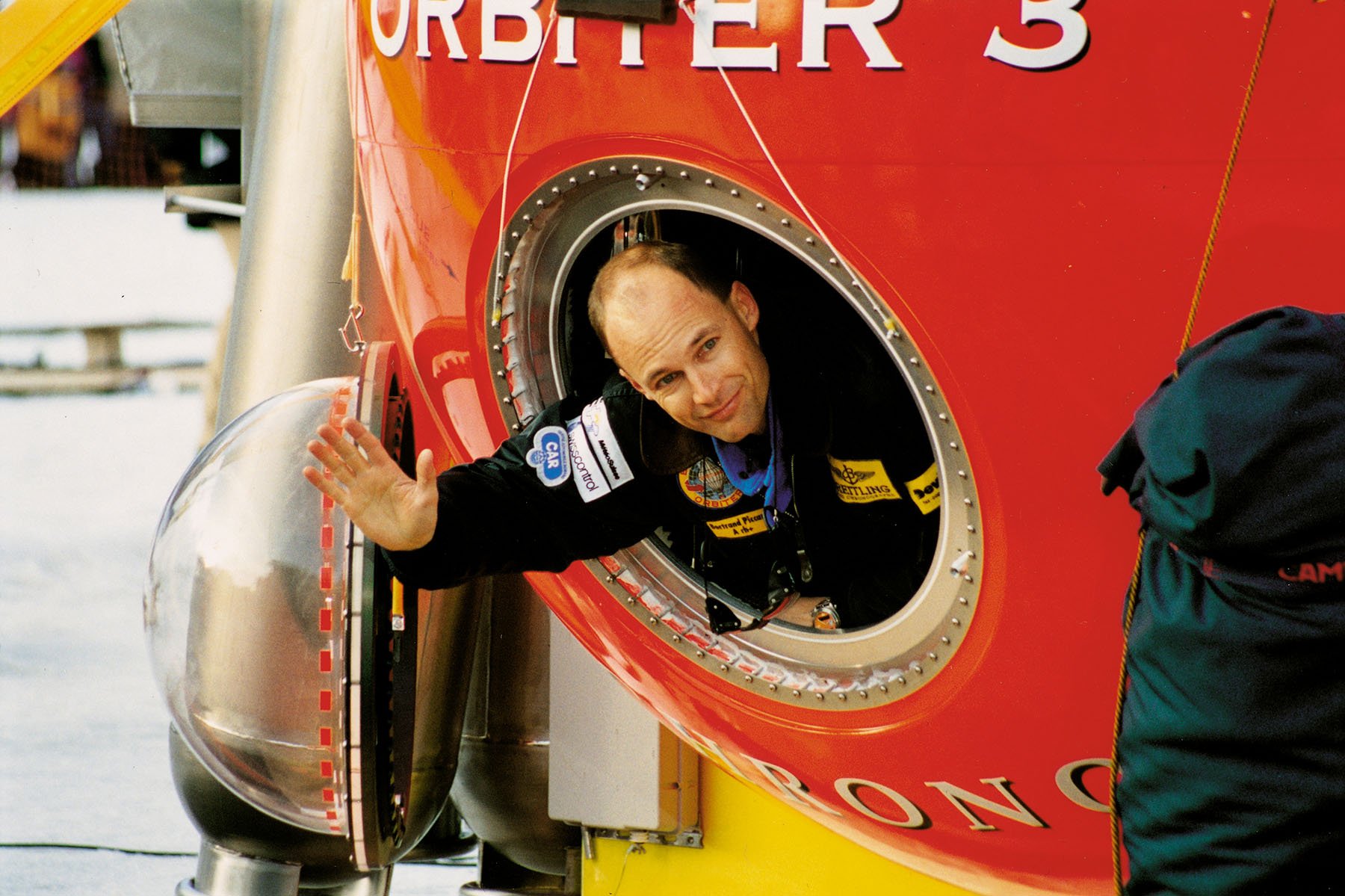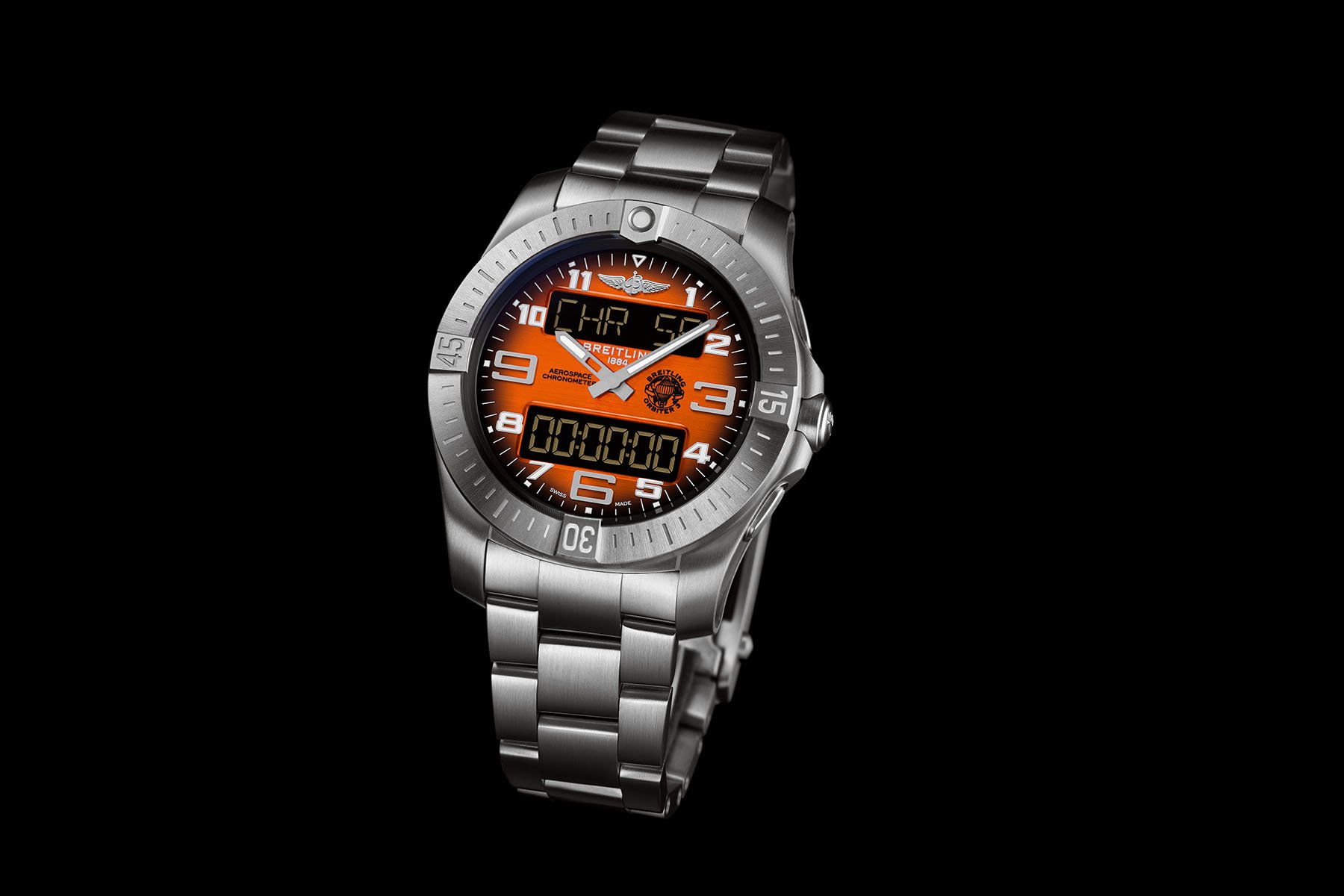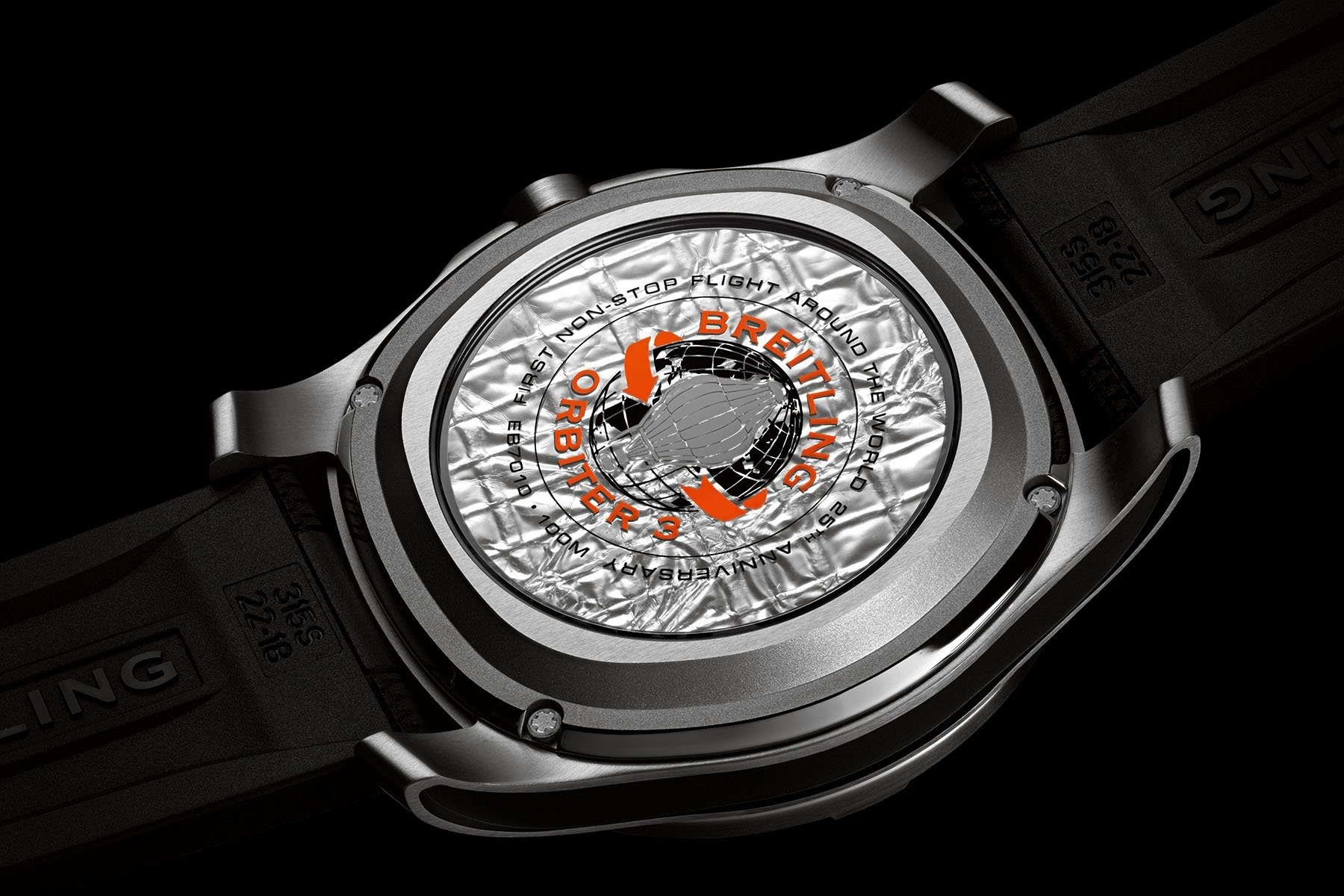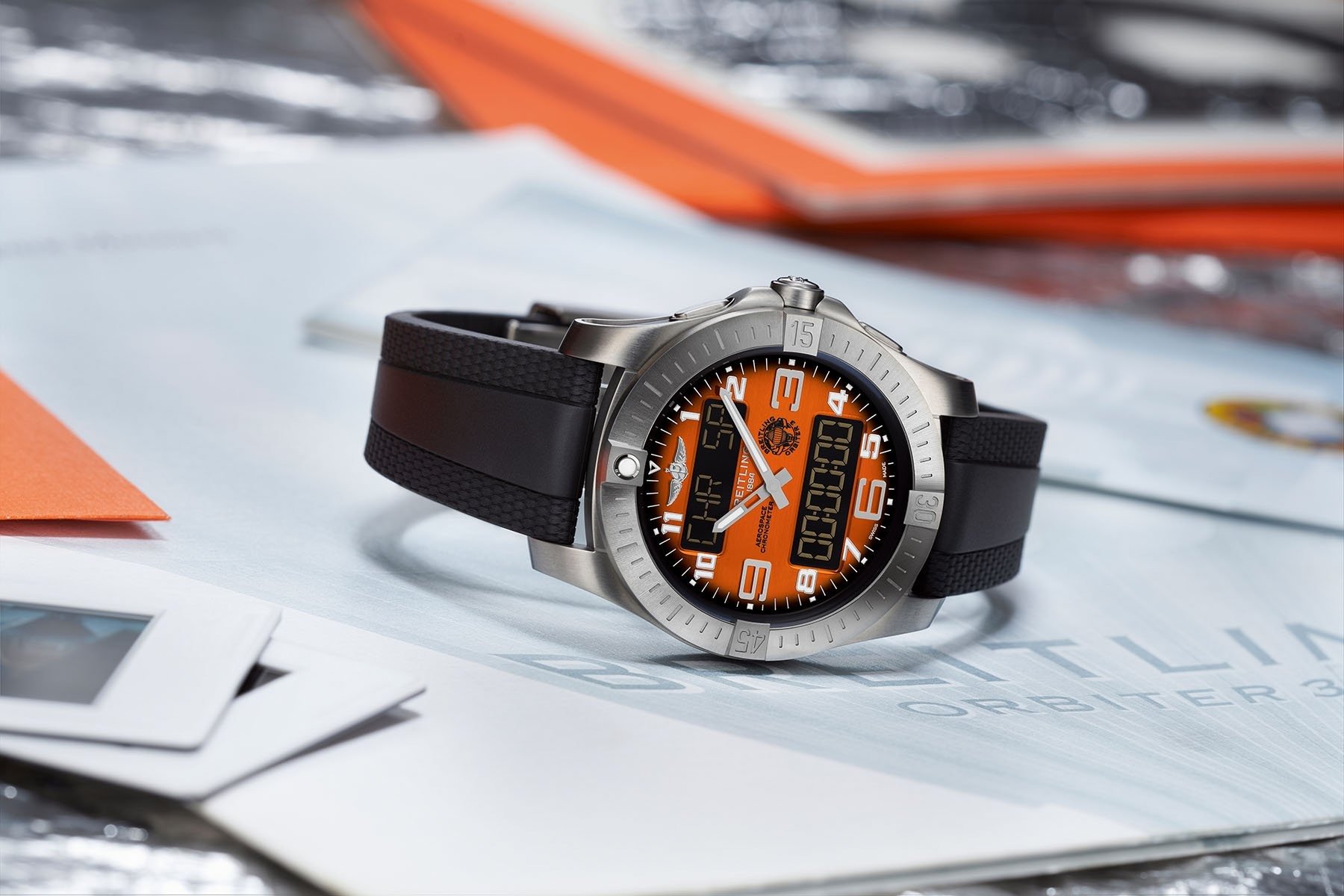Breitling Announces The New Aerospace B70 Orbiter — Celebrating 25 Years Since Orbiter 3’s Nonstop Balloon Flight
Today marks an important milestone for Breitling as it launches the next generation of Aerospace. With the outgoing Aerospace Evo stock levels in flux for the past few years, it has been uncertain whether the analog-digital Grade 2 titanium watch would stay. Breitling’s new 43mm Aerospace B70 Orbiter settles the debate and celebrates 25 years since the first nonstop global balloon flight in 1999. The smoky orange dial of this special edition matches the balloon’s gondola, with the Orbiter insignia flanking the right of the central pinion. Can the new Aerospace soar above the clouds, or will it deflate and come crashing to the ground? Let’s find out.
The Breitling Aerospace is a firm favorite at Fratello. Since 1985, the ana-digi watch has graced the wrists of pilots and enthusiasts of all generations. For a while, though, it seemed like the popular Swiss watch was on its way out. Breitling’s focus on heritage designs and mechanical ingenuity put the Aerospace on thin ice as an outlier to the brand’s direction. A few years ago, you would have struggled to find the 2013-introduced Aerospace Evo in any Breitling boutique or authorized dealer. While stocks replenished, it was hard to shake the feeling that the 11-year-old model had begun to lose touch with modern smartwatches. The new Aerospace B70 radically refreshes the collection to align it with Breitling’s Professional family.
Breitling Aerospace B70 Orbiter
While this edition is specifically a tribute to the 1999 global balloon flight — more on that soon — the inaugural B70 model shapes the Aerospace’s future. So, what is significant about the B70? First, it’s worth explaining how the Breitling Aerospace has operated since its creation. The quartz timepiece, and later thermo-compensated SuperQuartz in 2001, features dual LCD screens on the dial with analog hour and minute hands. The Super-LumiNova-equipped hands can be synchronized or set independently from the digital display, providing a tremendous dual-time function.
From 2007, the Aerospace used the Breitling caliber 79, which started life as an ETA 988.352. This COSC-certified chronometer maintains an accuracy of ±10 seconds per year and a three-to-four-year battery life. More than that, there is a programmable countdown timer, chronograph, alarm, four-year calendar, minute repeater, UTC, and backlight. All these functions are controllable via the single crown. The Evo, which has been in production since 2013, is the last generation to use the Breitling 79 movement. Considering the B79’s valiant 17-year run, 2024 seems like a reasonable year to refresh the movement.
The new B70 is a manufacture caliber co-developed with MMT. Powering the new Aerospace, the B70 is a thermo-compensated SuperQuartz COSC-certified chronometer with analog and digital displays — very much in keeping with the Aerospace DNA. The key new features are the 1/100th-of-a-second chronograph (with split-time and flyback functions), an electronic tachymeter, and a lap timer. The eagle-eyed among you will have noticed the three integrated pushers for controlling the watch’s functions. That’s right; the new Aerospace no longer relies solely on its rotating crown with integrated push-piece to activate its functions. While it’s a shame to lose the intuitive single-crown control, the B70’s recessed pushers sit almost flush within the sculpted lugs.
Breitling Orbiter 3 nonstop global balloon flight
I have told this story before, but it’s worth reiterating the Breitling Orbiter 3’s incredible feat. In March 1999, Bertrand Piccard and Brian Jones circumnavigated the globe in the first successful round-the-world flight in the Breitling Orbiter 3 balloon. It is still the most prolonged time an aircraft has remained airborne without stopping. However, Piccard and Jones didn’t make the trip in 80 days, as novelized by Jules Verne, but in 19 days, 21 hours, and 47 minutes. Breitling was growing impatient with the failure of Orbiter 1 and 2 and proclaimed that the Orbiter 3 would be the last attempt to be sponsored by the Swiss watch brand. Thankfully, the third time, as it often is, was the charm.
The Breitling team was not alone in this global record attempt. Cable & Wireless sponsored a team with a head start and surpassed the distance previously set by the Breitling Orbiter 2. However, both sides had to contend with adverse weather and maneuver around restricted airspace over China and Yemen. The Cable & Wireless team was still ahead and progressing well but elected to rely solely on solar power without any backup batteries.
A fateful decision
The extra power storage would’ve increased weight and energy consumption. Nearing the Pacific Ocean, the balloon was positioned with the Sun on the wrong side of the solar panel. Quickly losing power, the Cable & Wireless team ascended to catch the light and compensate. It was a fateful decision because ice gathered on the balloon during the ascent and added too much mass. Along with the dwindling power, the aircraft descended and eventually ditched into the ocean. With just enough time for the mayday call, the pilots were soon rescued.
With the main competition out of the race, you would’ve thought Piccard and Jones would relax in their efforts. Hardly. Knowing the same fate could await them, the level of fear was rising. What they had in their favor were the Breitling Emergency watches with orange dials strapped to their wrists. The beacon at the lower half of the case could be unscrewed and pulled for a distress signal to pulse to the nearest air and rescue forces if necessary.
Speeds of up to 100mph
They stayed airborne and continued the journey to Egypt, their finish line. The jet stream was favorable and helped them reach 100mph while also assisting with fuel efficiency. After nearly 20 days and 45,633km, Bertrand Piccard and Brian Jones touched down in the Sahara Desert. As they waited seven hours to be picked up, they noticed their last propane tank, not jettisoned, had only four inches of fuel left. Perfect timing or blind luck? You decide. But I think the truth is that you don’t break records of this magnitude without the rub of the green.
The balloon’s gondola is now on display at the Steven F. Udvar-Hazy Center National Air and Space Museum in Chantilly, Virginia. There is also a fantastic documentary on YouTube, via Bertrand Piccard’s account, that is worth watching. It covers this flight with onboard, hand-held cameras and footage shot by the pilots.
Back to the Aerospace B70
Breitling was not content with just updating the Aerospace’s movement. The brand has also sculpted and refined the case. I mention the recesses on the case sides already as they’re a dramatic diversion from all previous references. The bidirectional bezel has also been reworked and no longer has numerals in five-minute increments in a digitized typeface. Instead, it now only includes dashes on the main surface with numerals on the rider tabs at 15, 30, and 45 minutes. These numerals are elongated and more mature, befitting of the Aerospace’s grown-up refresh. Speaking of numerals, the ones on the dial align better with the style of the Endurance Pro. This alteration may be hard to spot at first. But looking at the 8, you may spot the B70’s wider bottom half versus the straight 8 on the Evo.
The 3, 6, and 9 numerals are also reminiscent of the Endurance Pro. Thankfully, the Aerospace B70 showcases these indices in their entirety, unlike the Endurance Pro, on which the sub-dials bite into them. Breitling is molding the Aerospace B70 to align with the Professional collection, where the Endurance Pro also resides. Therefore, the venerable “wings & anchor” logo stays on the dial, albeit replacing the 12 above the LCD screens rather than in between. This fan-favorite emblem, introduced in 1984, is now only found within the Professional family, whether rightly or wrongly. As for the case back, the Aerospace B70 contains a segment of the Orbiter 3 balloon visible through the exhibition window. Within the window is the mission logo with the inscription “First non-stop flight around the world 25th anniversary” running the circumference.
Initial impressions and pricing
As a longtime Aerospace fan, this announcement excited me, as my Fratello colleagues can attest. I will try to temper my enthusiasm; for now, this model is a tribute to the Orbiter 3 flight. However, knowing the brand, this execution will likely form the basis for future Aerospace models. The orange-to-black gradient dial of the Orbiter edition is quite striking. It’s not quite the color for me, but it makes sense to reference the gondola’s paint scheme and the orange-dial Breitling Emergency worn by the pilots. I must go hands-on with the B70 to adapt to its new layout and functionality. But aesthetically, I do appreciate the more prominent digital display. However, the movement’s increased functionality does drop the battery life to approximately two years from the B79’s four years.
Despite the more complex case, the Aerospace still achieves a 100m depth rating. Yet, the “living piece of history” does increase the case thickness from 10.8mm to 12.95mm. Perhaps future Aerospace B70s will forego the unique window and instead opt for a regular titanium case back, reducing the thickness. The bidirectional bezel is also a departure from the Evo but in line with the Endurance Pro. I don’t mind the influences from the Endurance Pro as they provide continuity within the range.
The Aerospace B70 is available on a Professional Titanium III bracelet with a push-button clasp or black rubber strap lifted from the SuperOcean collection. The Breitling Aerospace B70 Orbiter is available for £3,800 on the rubber strap and £3,950 on the titanium bracelet.
You can find more details about this new Breitling Aerospace B70 Orbiter via the brand’s website here.

